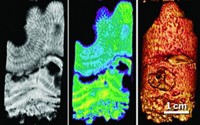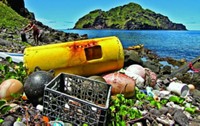Advertisement
Grab your lab coat. Let's get started
Welcome!
Welcome!
Create an account below to get 6 C&EN articles per month, receive newsletters and more - all free.
It seems this is your first time logging in online. Please enter the following information to continue.
As an ACS member you automatically get access to this site. All we need is few more details to create your reading experience.
Not you? Sign in with a different account.
Not you? Sign in with a different account.
ERROR 1
ERROR 1
ERROR 2
ERROR 2
ERROR 2
ERROR 2
ERROR 2
Password and Confirm password must match.
If you have an ACS member number, please enter it here so we can link this account to your membership. (optional)
ERROR 2
ACS values your privacy. By submitting your information, you are gaining access to C&EN and subscribing to our weekly newsletter. We use the information you provide to make your reading experience better, and we will never sell your data to third party members.
Environment
Identifying Future Climate Impacts
by Susan R. Morrissey
December 9, 2013
| A version of this story appeared in
Volume 91, Issue 49

Abrupt climate changes as well as steady changes that cross thresholds can have rapid impacts on human infrastructure and ecosystems, according to a National Research Council report. The report assesses which climate-change threats are expected to be abrupt—that is, occurring over a few years or decades—and which ones are unlikely to occur this century. For example, the report finds that abrupt changes include the disappearance of late-summer Arctic sea ice and increases in extinction rates of marine and terrestrial species. The report also notes that steady climate changes can cause abrupt changes if they cross a threshold—such as rising sea levels that exceed current sea wall heights. The report recommends that an abrupt-change early-warning system be developed to help anticipate future abrupt changes and reduce their impacts.




Join the conversation
Contact the reporter
Submit a Letter to the Editor for publication
Engage with us on Twitter